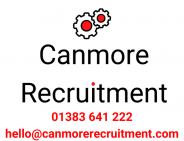The UK jobs market showed an amazing ‘bouncebackability’ (© 2005 Iain Dowie, ex-Manager, Crystal Palace FC) post-pandemic. Although advertised vacancies have now decreased for 30 consecutive months, it’s not all bad as the level is still higher than we were seeing pre-pandemic. There are plenty of vacancies out there!
Whether this is your first time on the job hunt for a while and you are creating a new CV from scratch, or you are just looking to freshen your CV up a bit, read on for some practical advice on creating an effective CV.
CV Preparation
Think of your CV as your personal sales pitch. It’s the first impression you make on a potential employer, and it needs to be clear, engaging, and professional. A strong CV can open doors, while a poorly presented one might see your application overlooked before you’ve had a chance to shine.
There’s no one-size-fits-all rule when it comes to CVs (despite the myth that they must be no more than two pages long!).
Below are some key tips for creating a CV that makes an impact – but feel free to share your thoughts if you have other suggestions!
- Keep it clean and professional. Use a widely recognised, easy-to-read font (Arial is a good choice). Avoid fancy or gimmicky typefaces, as they can look unprofessional and distract from your content. Stick to a single font throughout for consistency and use black text for readability.
- Structure it well. Use clear subheadings to separate sections like Employment History, Education, and Skills. This makes it easy for hiring managers to find the information they need quickly.
- Start with your personal details. Your name and contact information should be right at the top. There’s no point in crafting a fantastic CV if recruiters don’t know how to reach you! Yes, we have actually reviewed CVs with absolutely no contact information.
- Include a short personal profile. In three or four sentences, summarise your key skills, experience, and what makes you a strong candidate. This gives employers an instant overview of what you bring to the table.
- Highlight your technical skills. List relevant software, hardware, and equipment you’re experienced with – especially if they’re essential in your industry.
- List your education and qualifications. There’s no need to go as far back as primary school – focus on your most relevant and recent qualifications. Include any training courses you’ve completed that add value to your application. If you have substantial work experience, consider placing your education section after your employment history.
- Detail your employment history. Start with your most recent job and work backwards. Use bullet points to outline your key responsibilities, achievements, and skills developed in each role. Keep it concise – avoid lengthy paragraphs and unnecessary detail. For those with a longer career, you can reduce the amount of detail you give for each job the further back you go.
- Explain any career gaps. Whether it was maternity leave, travel, or further study, be upfront about any breaks in employment. Leaving gaps unexplained can raise questions for employers. And when there are questions, you may get put into the ‘Maybe’ list when you should be a ‘Yes!’.
- Check, double-check, and triple-check! Spelling mistakes or formatting issues can send your CV straight to the ‘no’ pile. Take the time to proofread it carefully – or ask someone else to review it for you. It wouldn’t be the first time that we see someone who has “Excellent atention to detal.”
Best of luck with your job search!

